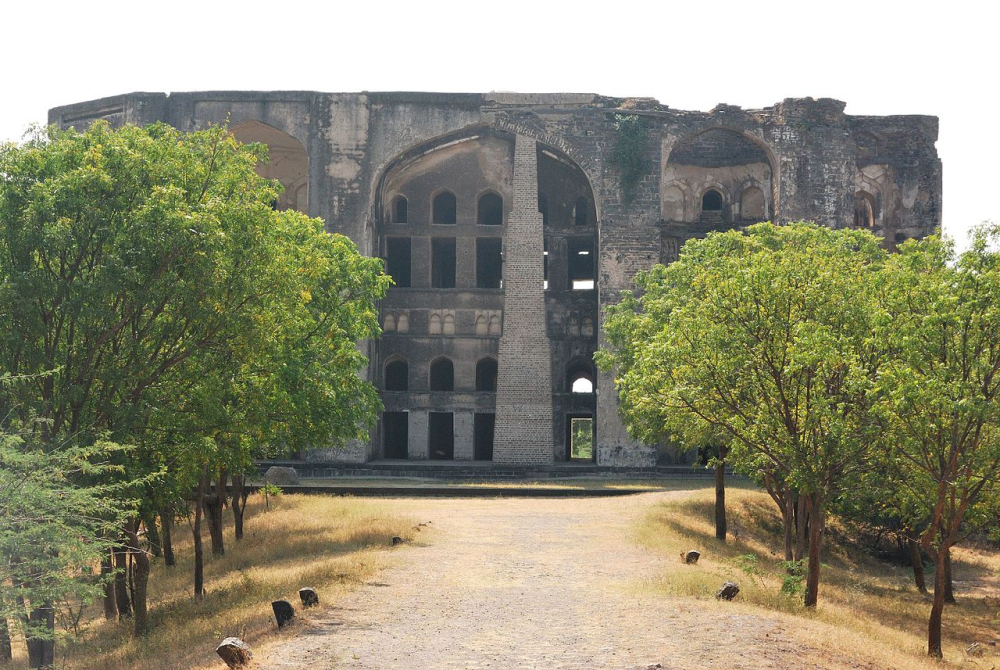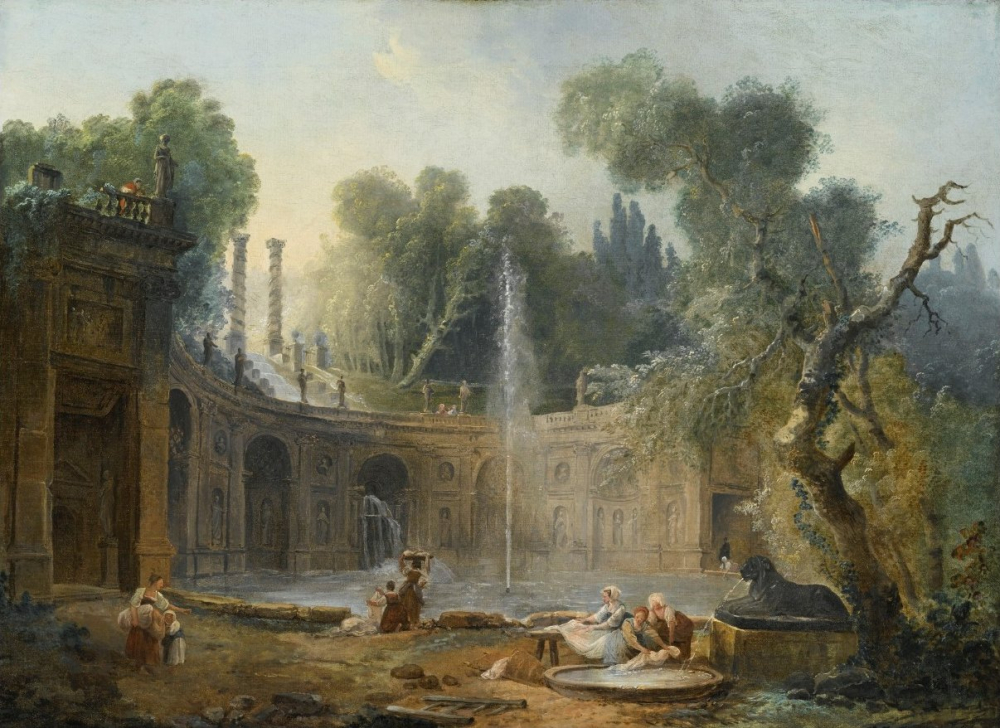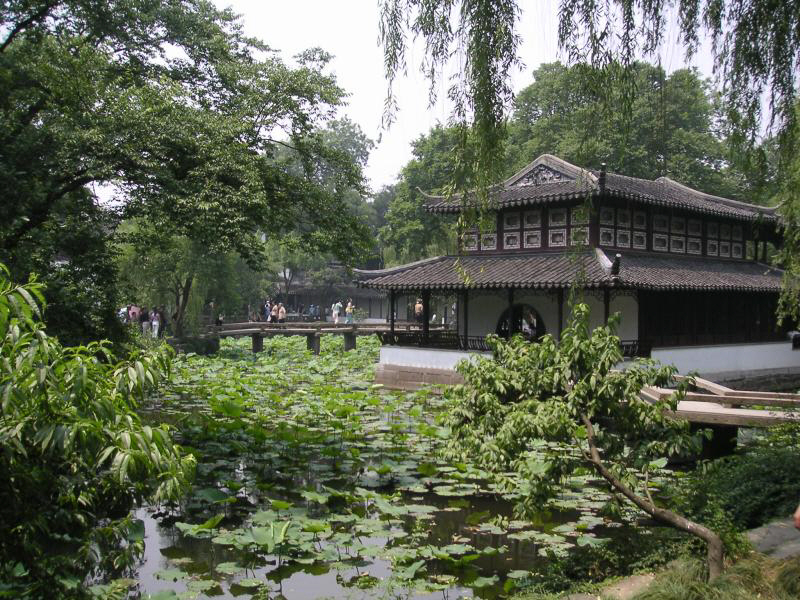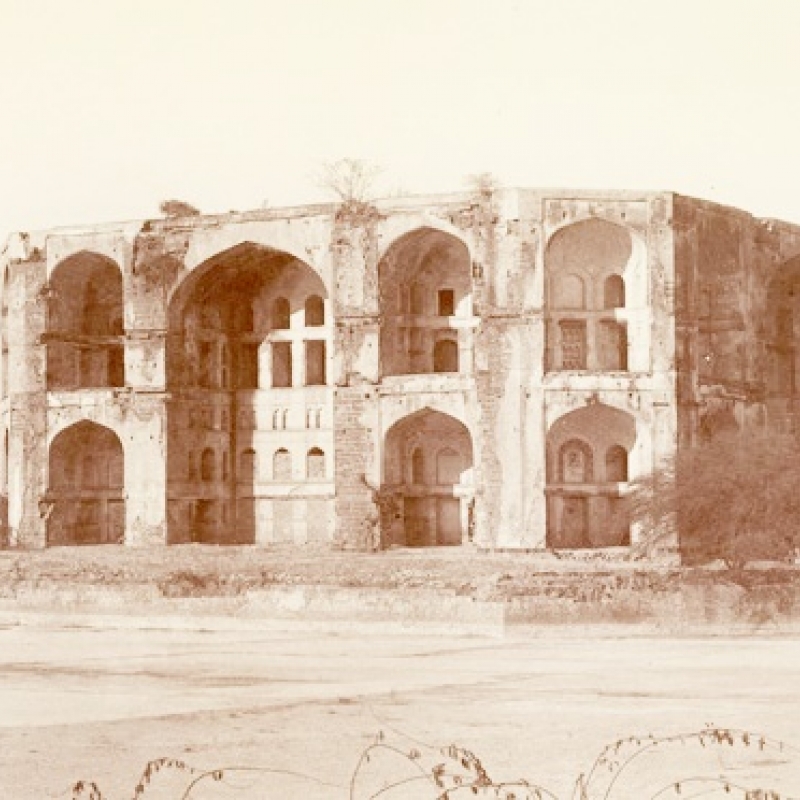The story of the overnight demolition of the Farah Bakhsh Bagh in Ahmadnagar is a fine example of the importance of astrology, astronomy and iconography in landscape planning in sixteenth-century India. We look at these intersecting themes in the context of medieval gardens across the world. (Photo courtesy: British Library Online)
Traditionally, medieval gardens have been viewed as spaces for elite consumption—social gatherings, relaxation and exchange of ideas. And this ideology is not only restricted to those enjoying the floral ecstasies of mother nature, but even in the landscape planning. Garden design in the period often employed trends such as astrology, geomancy, magic and numerology to enhance the experience and impact of such sensory spaces. So seriously were these factors regarded that, according to a sixteenth-century text, a massive garden in the kingdom of Ahmadnagar (present-day Maharashtra) was redone just because of triangles.
Ni’mat Khan, a courtier under Murtaza Nizam Shah I in the Indian subcontinent’s Deccan region, was ordered to construct a garden and a subterranean canal. The noble immediately occupied himself with the task at hand and, according to Tabatabai, a Nizam Shahi historian who wrote about the incident in AD 1576, ‘after a few days such a garden and edifices were built that the highest paradise melted in the fire of envy’.[i] The garden was named Farah Bakhsh (‘Joy Bestowing’),[ii] adjacent to the Farah Bakhsh Palace.

Farah Bakhsh, however, failed to please the Shah. Historian Firishta writes, ‘When Murtaza Nizam Shah went to that garden for amusement, it did not appeal to him…he dismissed Ni’mat Khan from the post of superintendent of that garden, and instructed Salabat Khan to pull down the building on which immense sums of money had been spent, and construct[ed] another in its place.’[iii] Tabatabai’s account adds to this information a small but significant detail—that the structure comprised numerous triangles. But why would the Shia king have such a violent reaction against a seemingly splendid garden? To understand this, two things are important—first, the knowledge that buildings were as essential to the garden as plants, in both Indic and Persianate cultures, and second requires us to take a small detour to the court of Bijapur ruled by Murtaza’s brother-in-law, Ali Adil Shah I.
Related | Mughal Architecture and Gardens
The Bijapuri ruler had written a significant treatise called the The ‘Nujum al-‘Ulum’ (‘The Stars of the Sciences’). This text had a particular description for Mirrikh (Mars/Mangal)—that ‘his buildings are triangular (musallas)’. Anyone worth his salt in medieval India would know that the planet Mirrikh was considered inauspicious in the Indic, Persianate and Hellenistic traditions.[iv] So, no surprise that Nizam Shah should order the demolition of a stunning garden upon seeing triangular structures.
Interestingly, such astronomical connections weren’t restricted to shapes. The sixth-century text, Brhat Samhita, prescribes specific nakshatras (constellations) for planting trees. Dr S. Natesh, who has worked extensively on plants and environment conservation, says, ‘some Puranas also prescribe each person born under a specific star to plant a particular tree.’

Turning the Globe
Astrology has played a perennial role in medieval gardens—starting from the cycles of planting to pruning and fertilising. Ahmadnagar and Bijapur are not the only places where one finds a reference to astrology intersecting with aesthetics in the medieval world. The seventeenth-century masnavi (collection of poems) Falak al-Buruj by Ruh al-Amin is also arranged around the two intersecting themes.[v] Turning the globe further, one finds an interplay between iconography and astronomy in examining the sundials decorating the early modern Roman gardens of Villa Aldobrandini of Frascati (Italy).[vi] Aside from astrology, the discourse of gardens also pervaded other discourses, such as that of geomancy that informed the elite culture of the Ming dynasty in China—showing its manifestations in both garden design and landscape painting.[vii] Humble Administrator’s Garden (Suzhou)—the garden of Wen Zhengming’s poems and paintings (fifteenth–sixteenth centuries) and a UNESCO World Heritage Site—reveals the propensity for geomancy and mathematics in architecture and landscape design.
Also Read | Herbal Garden, YBP
Gardens and Nobility
Returning to Farah Bakhsh, the site of our contestations, Deccan sultanates scholar Emma J. Flatt argues that a garden could often become the space where the competency of nobles in courtly skills, like garden design and astrology, could be tested or demonstrated. She adds that ‘Ni’mat Khan’s lack of education and low origins is dramatically revealed in the exemplary ethical and didactic space of a garden when he builds a garden “made of triangles”, a garden that by its shape is drawing the influence of the inauspicious planet Mirrīkh upon the kingdom of Ahmadnagar.’[viii] His garden, despite its obvious beauty, was, therefore, unacceptable and, while lacking these qualities, he couldn’t be a ‘real’ noble.[ix]
Gardens have been significant institutions for the elites of South Asia since the Mauryan times (322–185 BCE).[x] Popular imaginations of medieval gardens, however, constantly conjure up images of symmetrically planned, quadripartite, walled gardens with water channels—the Mughal Charbagh.[xi] Early garden sites lacking these features have been overlooked and are poorly preserved as compared to their Mughal[xii] or Timurid[xiii] peers. This has, therefore, necessitated the need to find sources, other than monumental, to study the question of garden traditions of the Deccani kingdoms.

Roots of Society and Culture
Scholars such as Craig Clunas and Dixon Hunt have lit a path away from the rather restricted focus on gardens as physical objects of enquiry. This makes it possible for us to interrogate literary and sculptural sources, aside from archaeological sources, which reveal the history of the garden as a cultural institution that represented the attitudes and practices of the people who patronised, constructed, took care of and experienced these gardens.[xiv]
According to French historian and critic Hippolyte Taine, a lot can be revealed about the motive and psychology of a people through their literature.[xv] Gardens, like literature and paintings, are most indicative of the moment and milieu in which they are borne. The story of Ni’mat Khan’s garden of triangles is only one analysis of how the discourses of astrology and magic prevalent in medieval Deccan influenced garden design and practices. Studies into the actual practices of gardens can help rediscover many such sites that contribute significantly to our understanding of the cultural, social, and religious currents of South Asia.
Notes
[i] Flatt, Emma J., ‘Heavenly Gardens: Astrology and Magic in the Garden Culture of the Medieval Deccan,’ in Garden and Landscape Practices in Precolonial India: Histories from the Deccan (Delhi: Routledge, 2011), 174.
[ii] Ibid.
[iii] Ibid.
[iv] Ibid., 178.
[v] Ibid., 190.
[vi] Ribouillault, Denis, ‘Atlas and Hercules in Garden: Scientific Culture and Literary Imagination at the Villa Aldobrandini at Frascati,’ Brill, 2015.
[vii] Clunas, Craig, Fruitful Sites: Garden Culture in Ming Dynasty China (London: Reaktin Books, 2004), 177–203.
[viii] Flatt, Emma J., ‘Heavenly Gardens: Astrology and Magic in the Garden Culture of the Medieval Deccan,’ in Garden and Landscape Practices in Precolonial India: Histories from the Deccan (Delhi: Routledge, 2011), 189.
[ix] Ibid.
[x] Daud Ali and Emma Flatt, eds., Garden and Landscape Practices in Precolonial India: Histories from the Deccan (Delhi: Routledge, 2011).
[xi] Ibid., 3.
[xii] Sixteenth–nineteenth centuries.
[xiii] Fourteenth–sixteenth centuries.
[xiv] Daud Ali and Emma Flatt, eds., ‘Introduction,’ in Garden and Landscape Practices in Precolonial India: Histories from the Deccan (Delhi: Routledge, 2011), 6.
[xv] ‘Race, Milieu, and Moment’, Encyclopaedia Britannica (Encyclopaedia Britannica, Inc., July 20, 1998), accessed September 26, 2019, https://www.britannica.com/art/race-milieu-and-moment.












